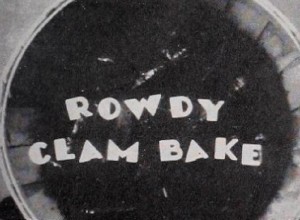
"Wilbur W. Krimpen's Rowdy Clam Bake is a sure source of delight for all lovers of food, drink or shuffleboard. It is a charmingly informal treatment of a clam bake through the successive stages of food preparation, cocktail time, shuffleboard (to whet appetites) and, ultimately, food consumption. In addition to its entertainment value, Rowdy Clam Bake rates high for its informative aspect, as it provides a step by step study of what constitutes a successful clam bake. The ingredients involved will not be listed here, lest the reader's credulity be strained. However, the film's parting shot, a closeup of an Alka-Seltzer container, is indicative of the epic dimensions of the feast." Movie Makers, Dec. 1948, 491-492.
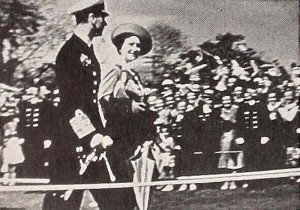
"What we have all wished a newsreel presentation of an important event could be has at last been brought to actuality by T. J. Courtney in his fine Kodachrome film Royal Visit — Halifax 1939. Let us hasten to add, also, that this film, besides being the apotheosis of the newsreel presents a carefully connected story of the events of the long anticipated day of the Royal visit in his city. Chiefly outstanding is the skillful and always appropriate use of closeups and atmosphere shots made with great care before, during and after the event and cut in with real skill to heighten the effect. But, most of all, the film is remarkable for its pace and sincere interpretation of public feeling; the early preparations for the Royal visit; the breathless expectation; the high enthusiasm at the time of Their Majesties' appearance, the promise of long remembrance at their departure — all these are clearly shown by Mr. Courtney's cinematic commentary. The complications that must have confronted him on this exciting day must be considered in our approval, too. He succeeded admirably in picturing the general excitement and enthusiasm, but at no time did his camera desert its steady support and accurate framing of the principal subject. The natural, close shots of the King and Queen are unsurpassed." Movie Makers, Dec. 1939, 632.
"A story, typical of the period, which includes - young lovers, a mother with high aspirations for her daughter, a rascally Count and much ‘ado’." (EAFA Database)
"Edited film shot during the Franco-American Expedition to Algeria which was sponsored jointly by the Logan Museum of Anthropology, Beloit College, and the Algerian government. Led by Alonzo Pond, Byron Khun de Prorok, and Maurice Reygasse, the expedition traveled from Biskra to Tamanrasset and back in three specially constructed Renault vehicles in October and November of 1925. The expedition excavated both prehistoric and ancient Sahara habitations and observed various Hoggar Tuaregs. Film features excavations on the ancient tombs near Tamanrasset (including the tomb of Queen Tin-Hinan, ancestral mother of the Tuaregs), French colonial outposts, encounters with Tuareg chiefs, and a wrestling match, a slave tent, and head shaving in a Tuareg camp," Human Studies Film Archives.
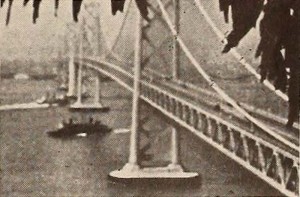
"To present, on 8mm. Kodachrome, where the problem of definition in distant shots is made more difficult by the greater screen enlargement in projection, a serious and satisfying architectural study of a structure that extends not a few hundred feet into the air, but thousands of feet horizontally, is a task that calls for skill in movie making. Raymond O'Connell, in San Francisco — Oakland Bay Bridge, has exhibited that skill and has to his credit, in this film, a definite accomplishment. The study is rendered comprehensible to the audience, at the very outset, by the use of a model of the bridge, which is introduced in the course of the picture, with excellent effect. In several instances, one passes from a shot of the model to another of the actual structure from the same angle, and so easily that it is possible to forget the cinematic labor put forth in finding a vantage point for the camera to show exactly what was needed. Of especial merit are shots of the changing pattern of the cables, made from a moving motor car, which provide a fine essay in abstract design." Movie Makers, Dec. 1938, 620.
"Footage of the Behrens family on holiday in Sandsend; June 1925. Includes various scenes of the family on the beach - Two men are seen wading through the sea, carrying a man and a boy to dry land. A large rowing boat is seen anchored in the background. - Three little girls stand on top of a sand castle, trying desperately to keep their feet dry, while a young boy shovels sand around them in an attempt to keep the in coming tide at bay. - A group of women are seen standing on a breezy hillside, dressed in outdoor clothing, carrying rucksacks and walking sticks. The film also features a brief shot of a London North Eastern Railway (L.N.E.R.) steam train departing from a platform" (NWFA Online Database).
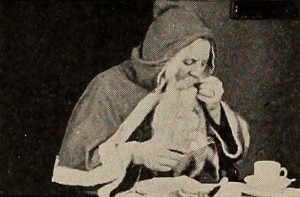
"Santa Passes Out is another of John Martin's delightful pictures of family life, a subject which he handles con amore. A series of unusually fine child studies makes this film outstanding, and the utterly spontaneous character of most of this material is all the more praiseworthy because every bit of it carries the story forward. Mr. Martin did not succumb to the sore temptation that besets the producer parent, to insert an irrelevant shot here and there because it is "so cute." The story itself is a gentle narration of the inevitable expose that awaits the fond parent when he impersonates Santa Claus, and the film as a whole is completely delightful. There is unusually good interior color photography throughout and a very clever, double exposed main title." Movie Makers, Dec. 1938, 597.
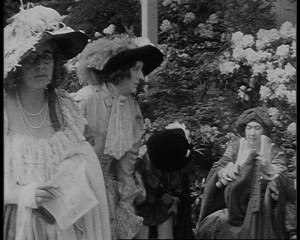
A short film documenting a historical re-enactment in Runnymede, Surrey.
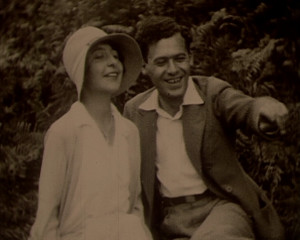
"A group of upper-middle class young men (dressed in shirts and ties, one in a striped blazer) sit on the grass. They are idle and bored and missing women. An intertitle states that `there is not a bird in sight'. A group of young women from the Amena Stich private school, led by their bespectacled female teacher, is walking out for exercise. The men see them and life looks better. They hide behind a hedge as the women pass by. The young women stray on a side path leaving their teacher to walk on alone. She eventually notices her young ladies are not behind her and goes to look for them. Meantime the men and women have met up and all sit around on the grass, the women being chatted up. Professor Stephen Chickwood is in the woods looking for insects. He meets the teacher and offers help to find her girls. They form a relationship and walk hand in hand. Eventually they come upon the young men and women who laugh and point at them. Amena shouts `Help'" (EAFA Database).
Travelogue and social gathering document. Narrated by Joan Baldwin with orchestral music by Sibelius throughout. "Only 50 people lived here last winter and 12 children attend the school. Fishing..." oldfilm.org
Total Pages: 29